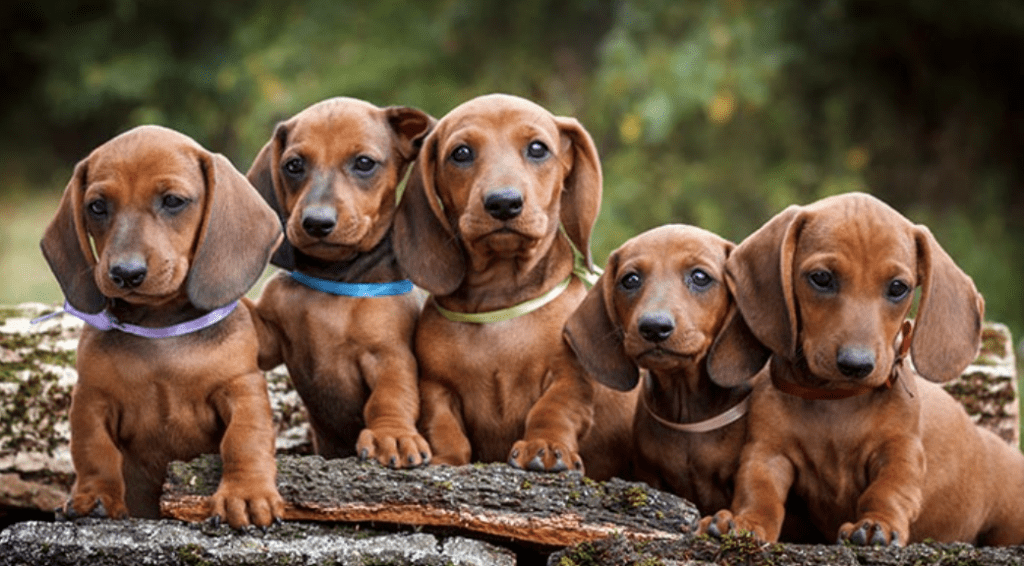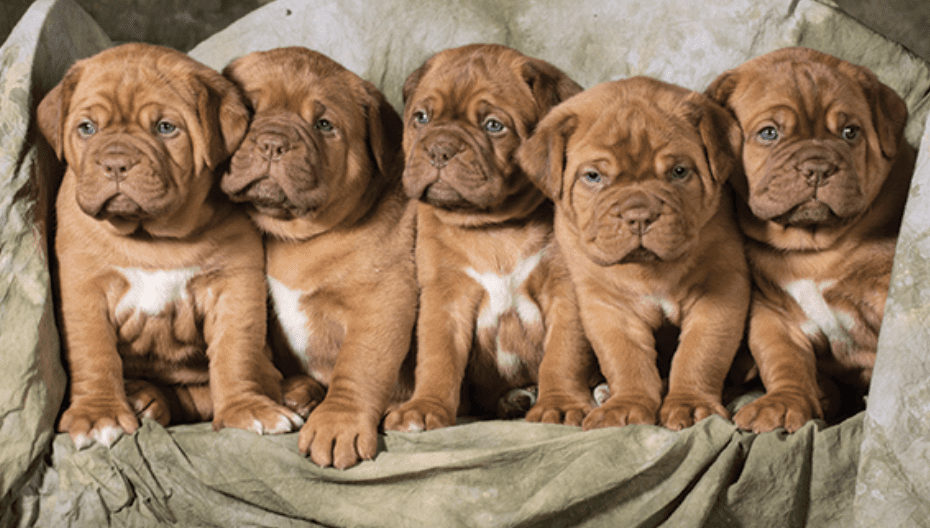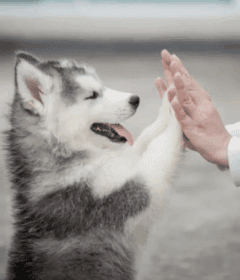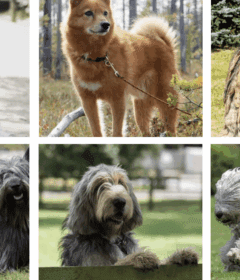How to Choose a Healthy Puppy

How to Choose a Healthy Puppy – Puppies are cute and adorable, which can make the process of choosing a puppy exciting and challenging.
Your choice to get a puppy is an important one, so make sure that you do not rush the process or make an impulse decision.
How to Choose a Healthy Puppy – Just remember that there is no single perfect puppy—the perfect puppy will be the one that fits perfectly into your life.
How to Choose a Healthy Puppy – What kind of dog do you want: big or small, long haired or short haired, pure bred or sweetly mixed?
Have you located a litter of available pups or a breeder?
How to Choose a Healthy Puppy – Do you know how to pick just the right pup from the litter to call your very own?
There are a lot of factors to consider when getting a new dog including home size, time allowance for play and exercise, and healthcare costs.
How To Choose a Healthy Puppy
In order to select a healthy puppy, it is important to do your research, here are some basics.

How To Choose a Healthy Puppy – Observe the Parents
How To Choose a Healthy Puppy – Observe the puppy’s parents.
Genetics play a significant role in how a puppy will look and behave.
It is likely that the puppy you are considering will have many of the same physical and behavioral traits as his parents.
Therefore, taking a long a good look at his parents first will help you determine if the puppy will be perfect for you.
If you are working with a breeder, ask him or her if you can see the puppy’s parents.
Whether the parents have traits that you like or dislike, chances are that the puppy will have those traits as well.
Keep in mind that breeders usually have only the mother on the premises.
The father (known as the sire) is usually in a different location.
If this is the case, you can ask the breeder for paperwork on the father.
It will probably not be possible to obtain information about a puppy’s parents at an animal shelter.
How To Choose a Healthy Puppy – Talk to the Breeder About Confidence & Activity Level
When you first visit the litter, it is important to observe the pups’ interaction with each other before you alert them to your presence.
You should be looking for an outgoing pup that is neither excessively submissive, nor dominant with the other pups.
Ask about appetite and eliminations.
Do all the pups eat dry puppy food?
Have they vomited or had diarrhea?
Have the pups been treated for intestinal parasites? (All pups should be dewormed every 2 weeks starting at 2 weeks of age.)
How To Choose a Healthy Puppy – If a Breeder Picks For You
If the breeder chooses a puppy, you want to make sure they have as much information about you as possible.
Make sure to tell them about yourself, your lifestyle and your expectations of your new puppy. This will enable them to make the best possible match.
The Breeder Should be Asking You:
Do you have kids?
Are you home during the day?
Do you want a male or female?
Are you an active person?
What activities are you looking to do with your pet?
How big a yard do you have and i it fenced?
Do you work at home?
Do you enjoy outdoor activities?
Do you leave the house for extended periods of time?
Are you looking for an energetic or calm pup?
Do you want them to be independent or eager to please?
How To Choose a Healthy Puppy – You Pick
If you are allowed to pick a puppy from the litter, you need to know where you are in the picking order.
If you were the last person to send in a deposit you will not have an option to choose.
You will simply be given the remaining puppy after everyone else has made their picks.
If you get to pick a puppy from a litter take some time to think about what you are looking for in an adult dog.
Use the questions above to help you determine what your needs are.
Then discuss what you are looking for with the breeder and let them guide you to the pup that best fits you.
Your breeder should be spending time with the puppies as they grow.
During this time an experienced breeder will get to know the puppy’s individual personalities and traits.
By the time the puppies are ready to be picked, the breeder should have a good idea of what each puppy’s temperament will be like as an adult.
It is in the best interest of your breeder to make sure you go home with the right dog.
How To Choose a Healthy Puppy – Types of Puppies
The Dominate Puppy
A dominate pup may seem friendly, social and active, but you may notice them stealing toys from other pups, climbing over their littermates, playing rough or trying to break out of their enclosure.
These are signs of wanting to be in control and may lead to them being harder to train.
They may also try to challenge young children. If you have young children this may not be a good fit.
The Independent Puppy
An independent pup likes to make their own choices. You may find them doing their own thing.
This pup can be quick-thinking, fun loving and engaging but they can also be hard to train.
Often they have their own agendas and are not interested in your commands.
These pups will require a lot of training but may become bored with repetitive training. Independent pups tend to have unique and fun personalities though.
The People Pleaser Puppy
The people pleaser wants to be with people and will come looking for your attention.
These pups can become very attached to their owners. With good positive training these pups can make great family companions.
They will not be a good choice for a home where they are often left alone.
The Relaxed Puppy
The relaxed pup may be less interested in you than their siblings.
It is sometimes believed that a relaxed pup is less intelligent, but they will balance play, interaction and sleep, well.
They will be a great fit for relaxed owners and a family.
Make sure you don’t confuse a relaxed pup with a shy pup. A relaxed pup will still be friendly, but a shy pup will keep their distance.
The Shy Puppy
The shy pup will be more timid then their littermates. They may keep their distance from you, wait in the back of the pack or hang their head low.
A shy pup will need a lot of time and patience to foster their self-esteem so that they become comfortable around others. T
hey are more suitable for singles and couples who have time to train them and give them a lot of attention.
How To Choose a Healthy Puppy – Sociability and Temperament
Do they all play together or is there a quiet one that retreats to a corner?
Is there one pup that always seems to come out on top of the heap?
If you want an assertive pet, that one may be for you.
If you want a more docile friend, retrieve the pup from the corner.
This does not mean that you will not have to socialize them or consider further training though.

How To Choose a Healthy Puppy – Sociability and Temperament
When you first interact with the puppies, look for ones that approach you with their heads held high and tails wagging.
These are signs of socially well-rounded pups that have had the right start in life.
Here are some tests you can do to check a pup’s sociability:
Pick up each of these pups and test their reactivity.
They shouldn’t struggle excessively or nip and vocalize, and they should settle relatively quickly in your arms.
Also manipulate their feet, tails and mouths to check they are not overly reactive to being poked and prodded.
Another good test is to hold them down on their backs for 30 seconds, initially they won’t like it but they shouldn’t bite or react excessively, and should actually relax under your moderate pressure.
This does take a little skill and confidence – have the adults do this.
Be careful not to choose the fearfully shy pup of the litter.
We tend to fall for the underdog, but this fearfulness trait is very difficult to change and is worth avoiding unless you have the skills to train the fearful dog effectively to give it confidence.
The ideal pup should want to be with you and follow you around and play with you when initiated.
How To Choose a Healthy Puppy – Survey Their Overall Appearance
Survey their overall appearance.
Do the puppies’ coats shine?
Are they dull or flaky?
Do you see any bald spots or sores?
Pups should have healthy coats that shine with no areas of hair loss or redness.
Watch them move. Do they hop around on all four legs?
Does anyone limp?
Pups have a clumsy gait, but should bear weight evenly on all of their limbs.

How To Choose a Healthy Puppy – Survey Their Overall Appearance
Here’s what to look out for to make sure you are choosing a healthy puppy:
The pups should be well-rounded and have a healthy, shiny coat.
They shouldn’t be too skinny or too fat.
Examine the pup physically and check it doesn’t have an under- or over-shot jaw.
Its eyes, ears and genitalia should be clear with no discharge or inflammation.
Of the two or three pups you have narrowed down, take them aside independently to test their vision and hearing.
This can be done by clicking, clapping or dropping something on the ground behind them to see if they respond.
Also you can test their sight by putting a treat or toy on the ground near them and making sure they can see it and find it.
A good breeder should have all the applicable papers proving the pups are of the highest quality.
However, I would always recommend a quick vet check just to be one hundred per cent sure with your final decision with regards to health and medical concerns.
How To Choose a Healthy Puppy – There’s More Than One We Like
There are one or two that I really like – what should I look for?
After assessing the litter as a whole, focus on a single pup.
Separate him from his siblings and give him a closer look.
Pay attention to these areas.
Eyes – Eyes should be clear with no redness or drainage.
There should be no hair loss around the eyes.
The pup should not squint or rub at his eyes.
Ears – Ears should not have an odor or discharge.
The ear flaps should be covered in healthy hair.
Scratching at the ear is a sign of trouble.
Nose – It is okay for the nose to have a slight clear discharge, but discolored drainage is not normal.
The pup should breathe easily and noiselessly from his nose.
Head – The top of the head may have a small soft spot.
If the soft area is larger than a dime, this could indicate future problems associated with “open fontanelles” which are openings between the bones/plates of the skull.
Mouth– The pup’s gums (mucus membranes) should be moist and healthy pink in color.
The top and bottom teeth should align, although some breeds commonly have a breed-specific under-bite (e.g., Bulldogs, Boston Terriers, Pekingese).
Body Wall – Look at the pup’s belly for a protrusion around the navel.
This could indicate an umbilical hernia.
If anything pokes out in this area, it could mean surgical correction may be necessary.
Skin – You already looked at the puppies’ coats while surveying the litter.
Now take a closer look at the individual puppy.
There should be no areas of hair loss, no pustules (pus-filled bumps or pimples), no redness, and no flaking.
How To Choose a Healthy Puppy – Gauging a Puppies Personality
Although accurate temperament testing is not possible at a very young age, you can get a general assessment of your pup’s personality.
Does he seem interested in play?
Does he sniff or nudge your hand when you hold it out and welcome your touch?
Is he comfortable around people or does he cower when you approach?
See if the puppy will roll over on his back for a belly rub.
Pups that will remain in that position are typically easygoing, while pups that resist being rolled onto their back often have a more independent nature.
Do not force the dog to stay in that position, as it can be stressful.
How To Choose a Healthy Puppy – Observing Interaction With Littermates
A puppy who plays well with his littermates (e.g., doesn’t mind being on the top or bottom of the pile) and enjoys their company will likely grow into a well-adjusted adult.
If the puppy would rather be alone or seems to get pushed around a lot by his littermates, he may not grow up to be very confident or sociable.
A puppy with a dominant behavior will approach his littermates with an upright posture and perky ears, rather than a lowered head and ears pointed backward (submissive behavior).
Observe how the puppy responds when his littermates yelp at him for playing too roughly.
A puppy who adjusts his play accordingly is showing that he can understand and stay within appropriate social boundaries.
It is helpful to observe the puppy’s interactions with his littermates before you interact with him.
Socialization from a young age is key to a puppy growing into a well-adjusted adult dog.
Ask the breeder how they socialize the puppies and how often.
Tests to Evaluate Each Puppy
Cradle Test
Carefully pick up the puppy. Cradle them in your arms and see how they react.
Does the pup struggle? Is she trying to mouth or bite? Does he lick your face? Is he calm?
A puppy that puts up a struggle at first but then settles down might be easier to train than a puppy that does not want to be held.
Touch Sensitivity Test
Holding the puppy, touch his toes and squeeze gently on his paws.
Touch the pup’s ears, and face too.
Pups that yelp at the slightest pressure or bite your hands are not good for families with kids.
A good response is a pup that shows no response.
Summons Test
Sit or kneel on the ground and call the puppy to you. Click your tongue or tap the ground to get the puppy’s attention if he does not respond to his name. If he comes to you quickly, he may have a strong attachment to people. If he ignores you or gets distracted he may be independent and require an experienced trainer.
Sound Sensitivity Test
Either clap your hands behind the pup’s head or drop a set of keys on the floor near the puppy but where they cannot see it fall to see what their reaction is.
Does he ignore it? Does he get startled by it?
A good response for a puppy is to go investigate the source of the sound.
Vision Test
To check a pup’s vision, roll a ball within the pup’s field of vision and see if he reacts to it by watching it or playing with it.
Visual Check
Take a good look at each puppy. Puppies should be nice and round, not too fat and not too skinny. Their eyes should be clear, bright and with no crust or discharge. Their ears, nose and teeth should be clean and gums pink.
Coats
Puppies should also have clean shiny coats with no sign of dirt or debris on their bodies.
Listen to how the puppy is breathing. It should be quiet without coughing or sneezing a lot.
Watch the Puppies
Watch how the puppy walks and runs. The puppy should be able to move around without limping or seeming stiff or sore.
Trouble moving may indicate hip or joint issues that could develop into something worst.
Pay attention to their energy level. If a pup bounces off the walls where he is, he’ll probably do it at your home.
This puppy will be good for a very active home that will include him in the activities.
Bite Response
To test a puppy’s bite response, allow the puppy to mouth you until they start to bite.
At that point respond with a high pitched “Ouch!” Watch to see if the pup catches on to your pain response.
They should react with fear or concern, rather than excitement.
Puppies that stop biting when people or dogs show pain are more likely to develop into adult dogs with good control over their mouths.
Don’t be too concerned if the puppy notes your reaction, stops for a moment, and then returns to nibbling your fingers. This is normal.
How To Choose a Healthy Puppy – When to Visit The Vet
Bring your new puppy to the veterinarian for a “pre-purchase exam” as soon as possible.
Even though you may have already paid the owner, this is called “pre-purchase” because most reputable breeders and adoption organizations will allow a probationary period (often 72 hours) before the agreement is finalized.
It is a good idea to schedule a veterinary appointment the same day you pick up your pup to promptly identify any existing problems.
After your cursory exam, your veterinarian will investigate further by listening to the pup’s heart, looking at his eyes and ears under magnification, assessing his teeth and gums, palpating his abdomen, checking his lymph nodes, identifying hernias or open fontanelles, looking for fleas and ticks, and testing for intestinal parasites.
Your veterinarian may also update immunizations and prescribe parasite preventatives to prevent heart worms, intestinal parasites, fleas, and/or ticks.
How To Choose a Healthy Puppy – When Does The Puppy Come Home With Me
Bring a clean towel from home and rub the mother dog and a couple of litter mates with it.
Wrap your pup in this familiar scent to ease his transition to a new home.
When you walk through the front door for the first time with your pup, take a minute to acquaint him with his new surroundings.
Let him explore the house, sniffing as he goes along.
Sit with him quietly, providing lots of hugs.
Then try a little playtime to further cement your new bond.
Take him on a walk to show him where he will eliminate or introduce him to potty pads.
Designate an area of low traffic flow where he will eat and sleep.
This may also be where you set up his crate.

How To Choose a Healthy Puppy – When Does The Puppy Come Home With Me
Something that most people don’t consider is how important it is to get your dog at 7 – 8 weeks old.
This is the beginning of the FORMATIVE PERIOD, and is the most important time in your dog’s development.
The best thing you can do for your dog is to get it at this age.
For the wolf (and dog alike), this is the transition period and it is the time when the pups would naturally leave the den and start to meet the rest of the pack.
You and your family are in essence “the pack”, and building that relationship during the formative period is when you can make or break your pup.
If you miss this critical formative period, you risk having a dog that is mal-socialized and may have behavioral issues such as aggression to people or other dogs, hyperactivity, no recall or no understanding of limits and boundaries.
During this time it is essential to socialize your puppy with many different people of all ages, races and gender as well as animals of all different species (cats, chickens, stock if you live rurally etc).
It’s also the time to teach your puppy all the foundational training skills that you will need for life.
How To Choose a Healthy Puppy – Food & Water
Have clean food and water bowls ready.
Feed your pup the same food at the same times his previous owner did for the first day.
If you and your veterinarian think it best to change foods or alter feeding schedule, do so gradually.
Most pups eat 2 or 3 times a day.
Monitor food intake the first few days though it may seem decreased the first few days as he adjusts to his new home and make sure he drinks plenty of water.
How To Choose a Healthy Puppy – Bed Time
When bed time comes, cuddle him a little, place his towel next to him in his bed, leave a soft radio on or other white noise, and tell him good night. Hopefully, he and you will sleep well so that you can enjoy the first of many fun-filled days together
Let Temperament and Observation Over Time Rule the Day
After the show ‘picks’ are designated, the remaining puppies are matched with homes and families based on their temperament as observed by the breeder over time.
This is key, as the puppy who is sleepy during your visit today may actually be the one who has been bouncing off the walls for the past four weeks.
Good breeders or caregivers will evaluate the litter for temperament and potential between 7-8 weeks of age, and be able to match you and the puppy based on the evaluation results and their observations of the puppy over time.
Good Breeders Will Insist on Making the Match
Having the breeder pick your puppy “takes all the stress off everyone,” notes local Labrador breeder Becky Dannaker of Nipntuck Labradors.
“People can visit the litter often, and not worry about having to choose their perfect puppy.
While individuals are welcome to give input, please understand we have decades of experience and will make the match we feel best for your family.”
She is even adamant about not identifying puppies (usually with color-coded collars) so no one–including her–gets biased for superficial reasons before they are even old enough to properly evaluate.
Don’t Be Fooled By “The Puppy Picked ME” Myth.
Sitting in the midst of the litter, your mind can play all kinds of tricks on you, making up stories that can carry your emotions away from good critical thinking.
A puppy who ‘picks’ you by coming when called first, gnawing on your shoe, or climbing up into your lap is not ‘picking’ you at all.
That puppy may in fact be a little tyrant, controlling your body and blocking access to it from other puppies.
Conversely, the puppy may be introverted and trying to escape from the commotion.
There are all kinds of ways that puppies behave during a visit that have everything to do with temperament and nothing to do with you.
Try to keep your imagination – and ego – in check.
Don’t Be Afraid to Walk Away
The only thing harder than trying to hit a 100 mph fastball in the major leagues is trying to walk away from a littler of puppies without taking one home.
If you are unsure about the match that the breeder has selected for you, share your concerns with your breeder and determine if there is another puppy that would also be a good fit.
If not, there will be another litter, another day.
It will be harder to live with a dog that you don’t feel good about or isn’t suitable for your home, then it will be to wait for another litter.
How To Choose a Healthy Puppy – Final Thoughts
Don’t Get Hung Up on “Pick Of The Litter”.
There really is no such thing as ‘pick of the litter’ because the best ‘pick’ will be based on the home and circumstances into which the puppy is going.
Usually a breeder will keep one or two ‘show picks’ based on their conformation structure.
‘Pick of the Litter’ show puppies are often bold, outgoing, and require a good deal more training and management than most families are ready for.
‘Pick of the Litter’ for your home should be a puppy with an easy going, moderate temperament, one who would enjoy and adapt to family life with ease.
View More Funny Bernese Mountain Dog Videos >>
Feeding Bernese Mountain Dogs >>
Do Bernese Mountain Dogs Know Their Size >>
The Language Of Bernese Mountain Dogs >>
How Your Bernese Mountain Dog Communicate With You >>
How to Select a Dog Name
- Unique Dog Names: Plus How to Pick One
- Scottish Dog Names: 500 Names to Choose From
- Australian Dog Names: 200 Dog Names to Choose From
- Norse Dog Names: Viking Names for Your Dog
- 550 British Dog Names: You Will Want to Use
- French Dog Names For Your Doodle
- Flower Names For Dogs: Plus Nature Inspired Dog Names



